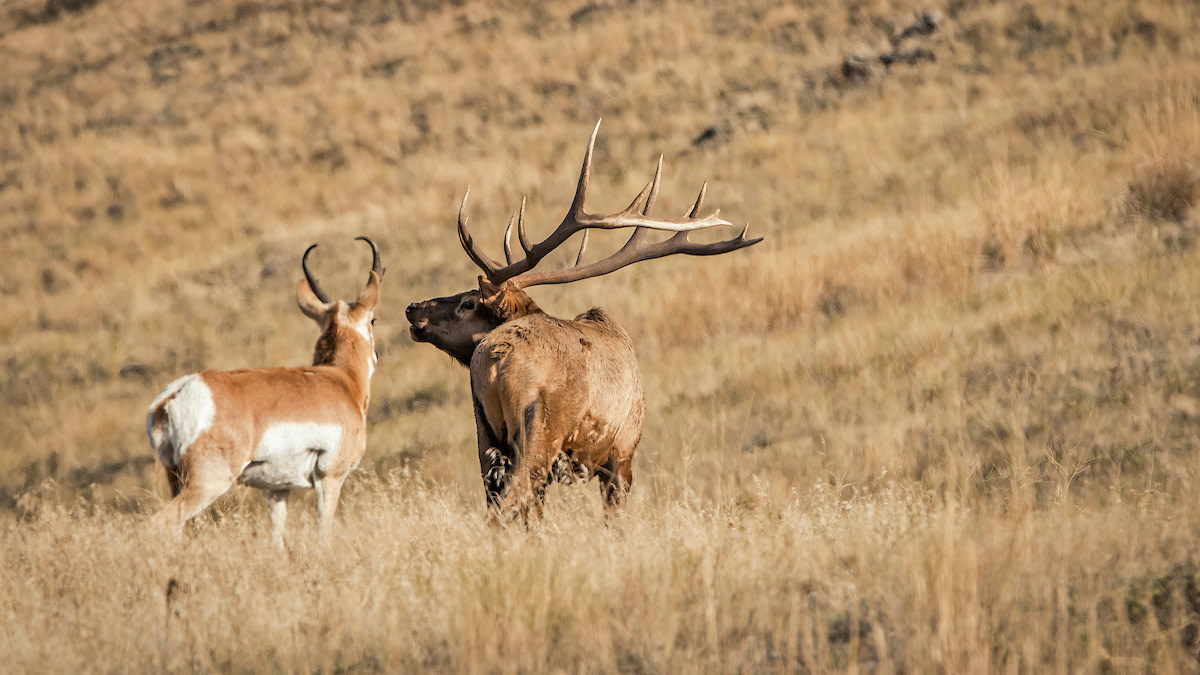
The North American Grasslands Conservation Act was officially introduced this morning by U.S. Senator Ron Wyden (D-OR) and co-sponsored by Senator Amy Klobuchar (D-MN) and Senator Michael Bennet (D-CO). If passed, the bill will be one of the most significant steps for grassland conservation efforts in the 21st century.
The act is designed to protect grassland ecosystems that have seen a 53-million-acre decline over the last decade.
Over 70% of grasslands have disappeared thanks to agriculture, development, and invasive plants. Pheasant populations have dropped by 70%, bobwhite quail have declined by 83%, and the overall grassland bird population is down over 40%.
This has all happened in recent history—on our watch, you might say.
The Grasslands Act would authorize $290 million per year to fund a grant program. These grants would be issued to farmers and ranchers, along with state, local, and tribal governments, to implement strategies to protect and restore grassland ecosystems. These projects can include voluntary conservation easements, restoration, and management, such as prescribed burns and invasive species control.
Much like the highly successful North American Wetlands Conservation Act incentivized wetland managers to implement sustainable conservation strategies, the Grasslands Act would give farmers and ranchers incentives to plant native grasses and improve habitat.
This proposal has been in the works for at least a year, but the bill’s sponsors have added two additional components in recent months. The bill will create a first-ever North American Grassland Conservation Strategy. This strategy will identify areas of high-risk grassland, identify specific goals for increasing grassland acreage, and develop a tool that can track progress.
The bill will also create a national Grasslands Conservation Council as well as regional grasslands conservation councils to recommend and approve projects that receive grant funding.
Both of these features will make sure the approval process is transparent and streamlined, and it will be easy to see how the money is benefitting the grassland ecosystems.
The bill defines “grasslands” as tallgrass, mixed grass, shortgrass, native prairie, sagebrush shrub-steppe, savanna grasslands, glades, and other related grassland ecosystems.
The bill has been sponsored by the National Deer Association, Pheasants Forever, the Theodore Roosevelt Conservation Partnership, and Backcountry Hunters and Anglers, among many other organizations.
Unfortunately, $290 million is a big ask, especially these days, and the bill is still a long way from passing. The legislation does not currently have any Republican co-sponsors, though conservation groups are working to secure additional supporters. The original price tag was dropped from $350 million to $290 million, which should help grease the skids.
“We’re talking to Republicans; I always try to find common ground,” Sen. Wyden told the Washington Post. “I’m not talking about Democratic grasslands or Republican grasslands.”
It’s also important to remember that this is what’s called an “authorizations bill.” It authorizes spending, but it doesn’t require spending. So, while it’s a big step in the right direction, there’s still time to work out funding.
If you’re a pheasant, elk, or pronghorn hunter—or a farmer or rancher—this is one of the most important bills of your lifetime.
Hunters love good wildlife habitat, but we can’t do it alone. We need the farmers and the ranchers. And the only way the farmers and ranchers will keep those farms and ranches intact and prevent them from getting covered up in god-awful condos is to diversify revenue streams. That’s exactly what the Grasslands Act will provide.
It protects a crucial ecosystem that’s vital to the health of the animals we love to hunt, and it does it on a voluntary, incentive-driven basis that doesn’t require ranchers to retire their pastures. They can still graze and hay. They just can’t plow the grass under for short-lived, short-rooted, soil-deteriorating, and moisture-sucking plants.
So jump on the phone with your representatives. We need more Congress critters to sponsor this legislation to get it across the finish line. Give them a call, and tell them you support the North American Grasslands Conservation Act.
We’ll look back on this one and be happy we made it happen.
Feature image via John Hafner.





